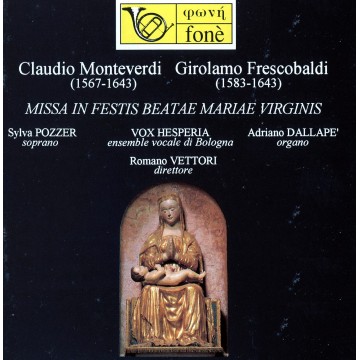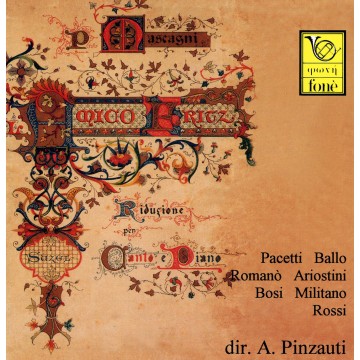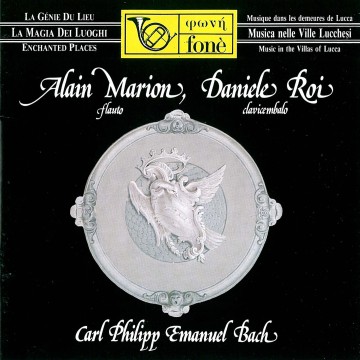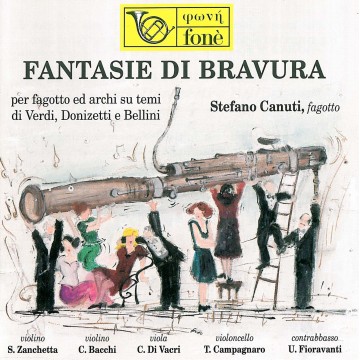LIEDER AND SONG
"Lieder and Song” is a refined high-resolution album that blends classical tradition with modern sensitivity. Soprano Patrizia Ciofi and pianist Rosaria Pellicano perform works by Mozart, Schubert, Schumann, Gershwin and Bernstein, taking the listener on a journey from European Romanticism to American musical theatre. Recorded in 1996 with 20-bit valve technology at Fattoria di Mitigliano, the album delivers outstanding sound fidelity, perfect for lovers of great vocal music in Hi-Res Audio.
W. A. MOZART
1. Abendempfindung (5.19) 2. An Chloe (2.53) 3. Trennungslied (5.21)
F. SCHUBERT
4. Standchen (4.15)
5. Gretchen am Spinnrade (3.45)
R. SCHUMANN
6. Mondnacht (3.39)
7. Der Nussbaum (3.48) 8. Ich grollenicht (1.42)
G. GERSHWIN
9. Someone to watch over me (3.04)
10. I got rhythm (1.59)
11. The man I love (3.00)
12. Summertime (2.16)
L. BERNSTEIN
Da West Side Story
13. Somewhere (2.24)
14. Maria (2.47)
15. Tonight (5.39)
R. SCHUMANN
16. Ich grollenicht (1.34)
Total Time: 53.33
While strolling in a garden you can make a beautiful bouquet by picking any of its endless variety of flowers. This is exactly what the Lieder anthology did. It picked music coming from various musical and poetic sources born either as individual or as being part of a musical cycle and above all coming from different cultural times (even if this chronological period spans only half a century). What is exactly the Lied? It can be truly qualified as the overtly idealized expression of a state of being characterized by a regular melodic structure based on popular songs. One can thus achieve a definition which could, with referral to the historical period dealt with, be included in a good dictionary. But the Lied is above all something different. Its text, either by mentioning joy or sorrow, through a picture, an image of nature or daily life, achieves a fleeting tie with human existence. It lasts only an instant; it can vanish when mentioned or be changed by different subsequent moods. A timeless wish, longing for what was barely perceived or what never was. Let's look at the titles of this anthology. We find three of the best Lieder by Mozart, all dated 1787. They all show an ante litteram approach to the expressive dimension which can itself be defined romantic. They are a leading path in the itinerary of the Lied because they mark the transition between the humble sphere of home usage and the splendour of artistic music. They are pieces that are not always based on texts of high poetic content, but the music makes the miracle, and it makes them become highly passionate like Abendemphindung (a foreboding sunset). Just like the touching love song for Cloe, in which the opera air still floats with delicate movements. Till the Trennungslied which surges to remind how oblivion can cancel in a few moments what love has given for years. Following the path of this subtle but everpresent nostalgia and of course, also the various musical traces, it is possible to move effortlessly from Mozart to Schubert. This nostalgia can be found floating in Staendchen -the serenade taken from the Schwanengesang cycle - it can be found concealing in a love call which quickly fades, carried away by the voices and the whispers of a nature still enveloped by night. There is then the classic nostalgia of what never was, found in Gretchen am Spinnrade where Schubert, only seventeen, gives us the first musical representation of an action which also reflects interior movements; the never-ending spinning of a whool winder. The piano supplies the energy of its rhythmic impulses, while the singing opens up in an emotional crescendo, to the longing of a vanishing love. This exquisitely romantic Leitmotiv is then slowly defined through the different pieces. Desire and absence seem to merge in a yearning enigma which continuously postpones the result of the search for the meaning of existence, like the key to an unreachable "last" word. In 1840 Schumann could not resist the fascination of such an emotional atmosphere and he dedicated himself to the Lieder for a whole year. During this composing frenzy he wrote about 150 of them. Aside from Frauenliebe und -leben, the most important ones are all represented here. Mondnacht (from Liederkreis op. 39) is a masterpiece. Here Schumann cloaks with music not only the text but also its poetic flow, thus creating a beautiful Notturno in which the soul opens its wings "as if it were flying towards home". Here, as in all the other Lieder, the piano is essential. It has always been the essence of Schumann's way of expression with its capability to become part of the motion of the singing, enriching its expressing echo up to the nuances of an intimate atmosphere. Such can be found in Der Nussbaum (taken from Myrthen) in which the blossoms of the nut tree whisper tender and untouchable images. As in Eichendorff s verses, "that hidden song which is asleep in objects" and as in "Ich grollenicht" (from the Dichterliebe) where the echo of a lost love resounds where all grudges vanish and only memories are allowed to survive. The Lieder are followed by songs which are more easily understood. They are, almost all, pages so widely known that they can easily be part of a concert although their original destination was totally different. Such is the case with three renouned "titles" by George Gershwin, based on three operettas staged between 1926 and 1930. First an easy-going fox-trot (taken from Oh, Kay!), then the hard to resist "I got rhythm" (from Girl crazy), which in 1934 was proposed even in the elaborate setting of "Variation for piano and orchestra". The bewitching slow (from Rosalie) which is "The man I love". Gershwin's very individual versatility which allows ragtime, blues, jazz and elements of a "cultural" tradition to blend into something very personal is also enriched by melodious inflexions originating from the spirituals. Porgy and Bess (1935), his masterpiece, a folk opera (such was defined by him and let's not dwell on this definition) includes "Summertime" which doesn't really need any introduction. Leonard Bernstein's pieces can be in many ways described as following the Leitmotiv of nostalgia. The pages herewith proposed -based on a refreshing but "knowing" neoromanticism - are part of one of his best-known works, the musical "West Side Story" (1957). It outlines the violent world of youth gang among which Maria's and Tony's loves blossoms. It is short lived, fleeting (why shouldn't it be? Just like the cue of a Lied). It is interrupted by a tragic end. It will come alive again... somewhere. Somewhere in an invisible and finally serene world.

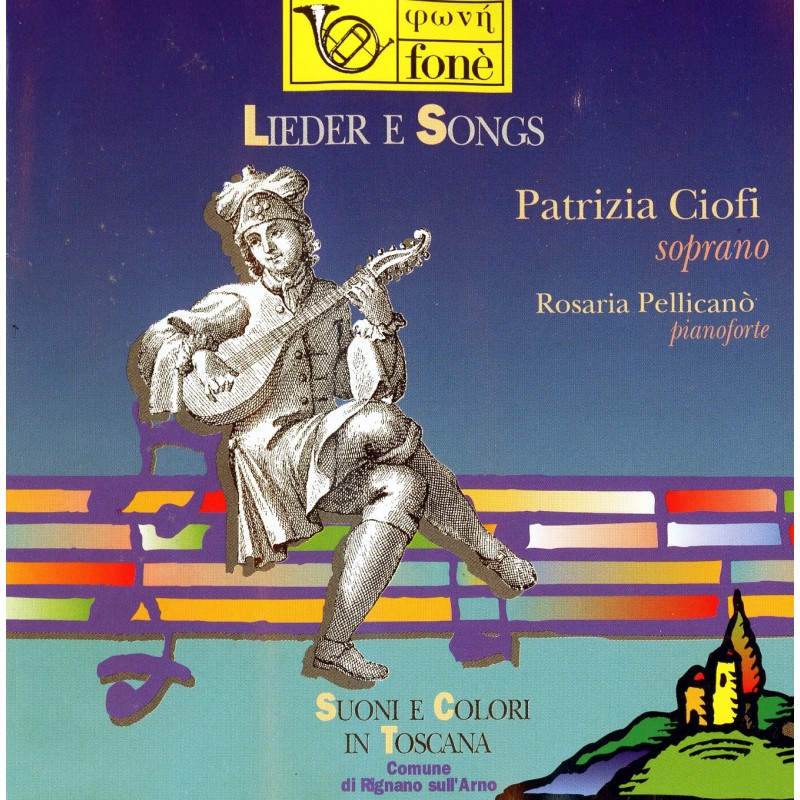

 Hd Tracks
Hd Tracks
